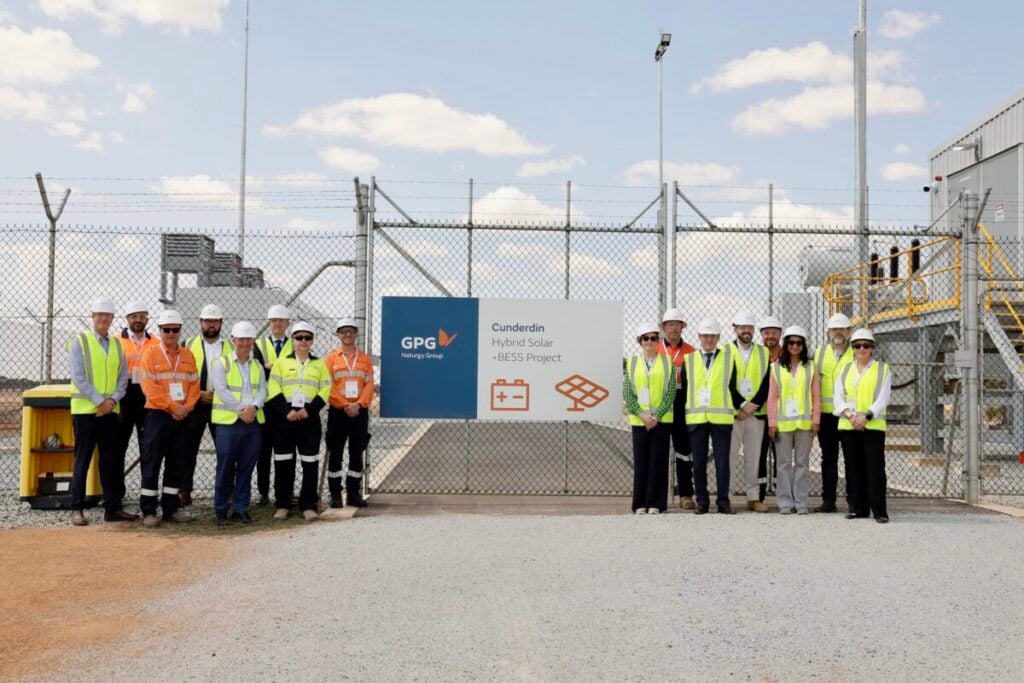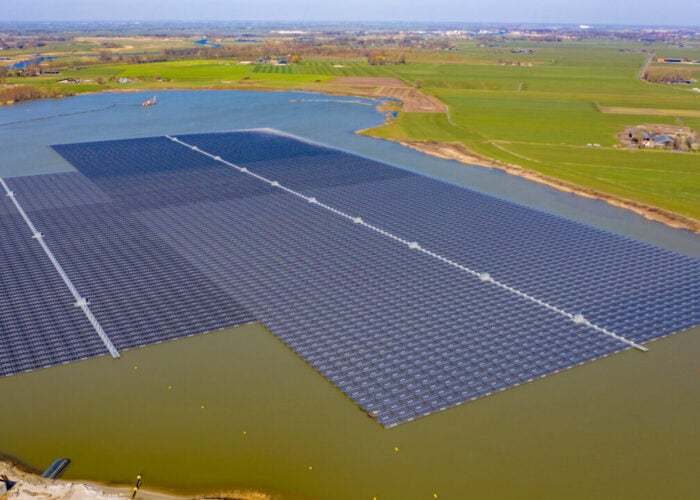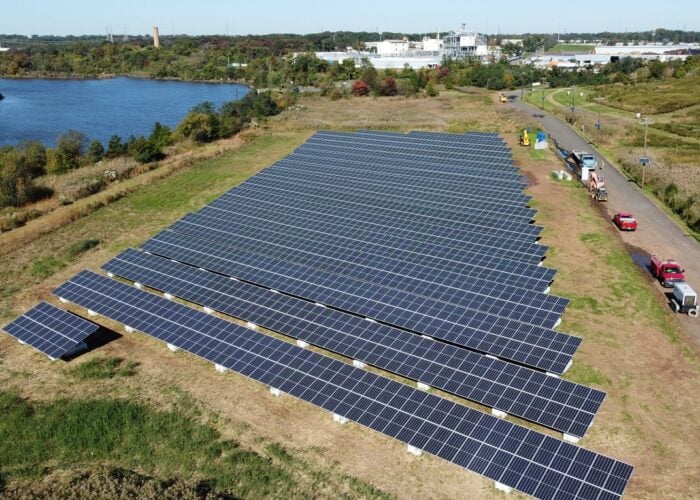
Australia’s Green Power Generation (GPG) has inaugurated a 128MW hybrid solar PV and battery energy storage (BESS) project in Western Australia.
The Cunderdin hybrid solar PV and BESS project features a PV power plant accompanied by a co-located 55MW/220MWh 4-hour duration BESS. It is connected to the South West Interconnected System (SWIS) electricity grid.
Unlock unlimited access for 12 whole months of distinctive global analysis
Photovoltaics International is now included.
- Regular insight and analysis of the industry’s biggest developments
- In-depth interviews with the industry’s leading figures
- Unlimited digital access to the PV Tech Power journal catalogue
- Unlimited digital access to the Photovoltaics International journal catalogue
- Access to more than 1,000 technical papers
- Discounts on Solar Media’s portfolio of events, in-person and virtual
Or continue reading this article for free
GPG confirmed that the solar PV power plant includes around 229,500 solar PV modules, and the BESS was supplied by energy storage and inverter supplier Sungrow. It required an investment of €172 million (AU$300 million) to fully develop, with over AU$229,000 allocated to community engagement and benefit-sharing initiatives.
The company claimed this is Western Australia’s first solar hybrid initiative; earlier this week, Pacific Energy, a distributed energy company, completed a 61MW solar-wind hybrid renewable energy generation project to power a gold mine in the same state. However, Cunderdin is thought to be Western Australia’s first grid-connected solar-plus-storage hybrid project.
Renewable energy developer Frontier Energy was potentially set to hold this honour via the first stage of the Waroona Renewable Energy Hub, which included 120MW of solar PV generation capacity with a 80MW/360MWh battery storage system. However, its development was halted in October last year after it missed out on Reserve Capacity Credits from the Australian Energy Market Operator (AEMO).
The Cunderdin project also represents Naturgy’s, a multinational energy company headquartered in Spain and owner of GPG, first hybridisation project globally. Naturgy secured the hybrid site in 2022.
Francisco Bustío, CEO of Global Power Generation, highlighted that the project sets “new global benchmarks for the renewable energy generation industry.”
GPG was aided in developing its Western Australia hybrid project by an AU$2.3 billion (US$1.45 billion) financing facility secured at the end of 2024. The financing was secured from 11 international banks. It was centred around GPG’s Australian portfolio, which consists of eight operating assets, including six wind farms, a BESS project and the Cunderdin hybrid project.
Jai Thomas, Western Australia’s acting director general for the Department of Energy, Mines, Industry Regulation and Safety, attended the opening ceremony and said: “It is great to see Western Australia’s government’s energy market reforms underpin innovative projects such as this.”
Western Australia held a state election on 8 March, in which the Labor Party won a third term in office, with 46 of 59 seats, to the Liberals’ seven and Nationals’ six.
Western Australia sees a flurry of utility-scale solar PV developments
The number of notable utility-scale solar PV projects in Western Australia has been steadily rising over the last few months, with the Cunderdin hybrid site being the latest to enter this list.
One such project is a 644MW solar PV power plant proposed for the mineral-rich Pilbara region of Western Australia by mining giant Fortescue Metals Group.
The Turner River Solar Hub is proposed approximately 120km south of Port Hedland. It would support the mining company in decarbonising its regional operations by connecting to Fortescue’s existing Pilbara Energy Connect (PEC) transmission system.
If approved, the project would have a lifespan of 25 years and will either be repowered or decommissioned at the end of life.
Several solar PV power plants to produce green hydrogen have also been proposed for Western Australia, owing to the region’s vast open spaces and abundant solar irradiance, which make it attractive to prospective developers.
The Australian Renewable Energy Agency (ARENA) awarded AU$814 million in funding last week (24 March) to investment firm Copenhagen Infrastructure Partners (CIP) to support the first stage of the Murchison Green Hydrogen Project.
Stage one will feature 1,200MW of solar PV, 1,700MW of onshore wind, and a 600MW/1,200MWh (2-hour duration) BESS. These technologies will help the Murchison project become a major producer and exporter of green hydrogen and its derivative, green ammonia. The site will include up to 1.5GW of electrolysis and produce 3,600 tonnes per day of ammonia. Annually, CIP expects the site to produce 1.8 million tonnes of ammonia.
Western Australia is also home to the Western Green Energy Hub, a 70GW solar PV and wind project proposal, which incorporates green hydrogen production into its plan.







